NPs Basic Information

|
Name |
Bis(2-ethylhexyl) sebacate
|
| Molecular Formula | C26H50O4 | |
| IUPAC Name* |
bis(2-ethylhexyl) decanedioate
|
|
| SMILES |
CCCCC(CC)COC(=O)CCCCCCCCC(=O)OCC(CC)CCCC
|
|
| InChI |
InChI=1S/C26H50O4/c1-5-9-17-23(7-3)21-29-25(27)19-15-13-11-12-14-16-20-26(28)30-22-24(8-4)18-10-6-2/h23-24H,5-22H2,1-4H3
|
|
| InChIKey |
VJHINFRRDQUWOJ-UHFFFAOYSA-N
|
|
| Synonyms |
BIS(2-ETHYLHEXYL) SEBACATE; 122-62-3; Bis(2-ethylhexyl) decanedioate; Bis(2-ethylhexyl)sebacate; Bisoflex; Di(2-ethylhexyl) sebacate; Plexol; Decanedioic acid, bis(2-ethylhexyl) ester; Bisoflex DOS; Edenol 888; Monoplex DOS; Octoil S; Reolube DOS; Staflex DOS; diethylhexyl sebacate; Sebacic acid, bis(2-ethylhexyl) ester; Uniflex dos; 2-Ethylhexyl sebacate; Plexol 201J; Sansocizer DOS; Ergoplast SDO; Reomol DDS; Edenor DEHS; Di-2-ethylhexyl sebacate; Di(2-ethylhexyl)sebacate; PX 438; Sebacic acid bis(2-ethylhexyl) ester; 1-Hexanol, 2-ethyl-, sebacate; NSC 68878; Bis(ethylhexyl) sebacate; DOS; Bis-(2-ethylhexyl)ester kyseliny sebakove; U9LS47Q72Q; Decanedioic acid, 1,10-bis(2-ethylhexyl) ester; NSC-68878; Dioctyl sebacate (VAN); USAF KE-2; Di-2-ethylhexyl isosebacate; CCRIS 6191; HSDB 2898; EINECS 204-558-8; Sebacic acid, di-2-ethylhexyl diester; Isosebacic acid, di-2-ethylhexyl ester; BRN 1806504; UNII-U9LS47Q72Q; Bis(2-ethylhexyl)decanedioate; AI3-09124; Ergoplast SNO; Plasthall DOS; Bis-(2-ethylhexyl)ester kyseliny sebakove [Czech]; Sebacic acid di(2-ethylhexyl) ester; MFCD00009497; Sebacic acid, bis(2-ethylhexyl)ester; BEHS; 1-Hexanol, sebacate; Plexol 201; HALLSTAR DOS; DUB DOS; bis(2_ethylhexyl)sebacate; DSSTox_CID_5055; EC 204-558-8; DSSTox_RID_77644; DSSTox_GSID_25055; SCHEMBL37169; 4-02-00-02083 (Beilstein Handbook Reference); HATCOL 5110; AEC DIETHYLHEXYL SEBACATE; Sebacic acid bis(2-ethylhexyl); CHEMBL3187356; DTXSID7025055; NSC68878; DIETHYLHEXYL SEBACATE [INCI]; Tox21_303439; (+/-)-DIETHYLHEXYL SEBACATE; AKOS015903925; AT25397; Bis(2-ethylhexyl) ester, sebacic acid; DIETHYLHEXYL SEBACATE, (+/-)-; BIS(2-ETHYLHEXYL) SEBACATE [MI]; decanedioic acid bis(2-ethylhexyl) ester; decanedioic acid bis(2_ethylhexyl) ester; NCGC00257416-01; 29590-28-1; CAS-122-62-3; LS-15168; BIS(2-ETHYLHEXYL) SEBACATE [HSDB]; Decanedioic acid, di-(2-ethylhexyl) ester; Bis(2-ethylhexyl) ester, decanedionic acid; DB-041675; CS-0152375; FT-0631704; S0025; WLN: 4Y2 & 1OV8VO1Y4 & 2; SEBACIC ACID BIS (2_ETHYLHEXYL) ESTER; Bis(2-ethylhexyl) sebacate, >=97.0% (GC); Bis(2-ethylhexyl) sebacate, technical grade, 90%; J-004836; Q4387284; Bis(2-ethylhexyl) sebacate, Selectophore(TM), >=97.0%
|
|
| CAS | 122-62-3 | |
| PubChem CID | 31218 | |
| ChEMBL ID | CHEMBL3187356 |
*Note: the IUPAC Name was collected from PubChem.
Chemical Classification: |
|
|
|---|
——————————————————————————————————————————
NPs Species Source
| Endophyte ID | Endophyte Name | Family | Genus | Taxonomy ID | GenBank ID | Closest GenBank ID | Reference | |
|---|---|---|---|---|---|---|---|---|
| Endophyte ID | Endophyte Name | Family | Genus | Taxonomy ID | GenBank ID | Closest GenBank ID | Reference |
NPs Biological Activity
| Bioactivity Name | Target ID | Target Name | Target Type | Target Organism | Target Organism ID | Potency of Bioactivity | Activity Type | Value | Unit | Endophyte ID | Endophyte Name | |
|---|---|---|---|---|---|---|---|---|---|---|---|---|
| Bioactivity Name | Target ID | Target Name | Target Type | Target Organism | Target Organism ID | Potency of Bioactivity | Activity Type | Value | Unit | Endophyte ID | Endophyte Name |
NPs Physi-Chem Properties
| Molecular Weight: | 426.7 | ALogp: | 9.0 |
| HBD: | 0 | HBA: | 4 |
| Rotatable Bonds: | 23 | Lipinski's rule of five: | Rejected |
| Polar Surface Area: | 52.6 | Aromatic Rings: | 0 |
| Heavy Atoms: | 30 | QED Weighted: | 0.137 |
——————————————————————————————————————————
NPs ADMET Properties*
ADMET: Absorption
| Caco-2 Permeability: | -4.744 | MDCK Permeability: | 0.00001660 |
| Pgp-inhibitor: | 0.348 | Pgp-substrate: | 0.002 |
| Human Intestinal Absorption (HIA): | 0.002 | 20% Bioavailability (F20%): | 0.977 |
| 30% Bioavailability (F30%): | 0.993 |
——————————————————————————————————————————
ADMET: Distribution
| Blood-Brain-Barrier Penetration (BBB): | 0.032 | Plasma Protein Binding (PPB): | 96.53% |
| Volume Distribution (VD): | 1.07 | Fu: | 1.23% |
——————————————————————————————————————————
ADMET: Metabolism
| CYP1A2-inhibitor: | 0.168 | CYP1A2-substrate: | 0.182 |
| CYP2C19-inhibitor: | 0.362 | CYP2C19-substrate: | 0.067 |
| CYP2C9-inhibitor: | 0.162 | CYP2C9-substrate: | 0.287 |
| CYP2D6-inhibitor: | 0.815 | CYP2D6-substrate: | 0.054 |
| CYP3A4-inhibitor: | 0.739 | CYP3A4-substrate: | 0.109 |
——————————————————————————————————————————
ADMET: Excretion
| Clearance (CL): | 6.528 | Half-life (T1/2): | 0.35 |
——————————————————————————————————————————
ADMET: Toxicity
| hERG Blockers: | 0.31 | Human Hepatotoxicity (H-HT): | 0.082 |
| Drug-inuced Liver Injury (DILI): | 0.039 | AMES Toxicity: | 0.003 |
| Rat Oral Acute Toxicity: | 0.006 | Maximum Recommended Daily Dose: | 0.362 |
| Skin Sensitization: | 0.966 | Carcinogencity: | 0.07 |
| Eye Corrosion: | 0.97 | Eye Irritation: | 0.708 |
| Respiratory Toxicity: | 0.49 |
——————————————————————————————————————————
*Note: the ADMET properties was calculated by ADMETlab 2.0. Reference: PMID: 33893803.
Similar Compounds*
Compounds similar to EMNPD with top10 similarity:
| Similar NPs | Similar Drugs | ||||||
|---|---|---|---|---|---|---|---|
| NPs ID | NPs 2D Structure | Similarity Score | TTD ID | Drug 2D Structure | Similarity Score | ||
| ENC000213 | 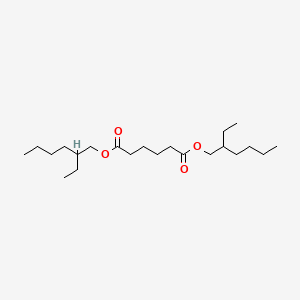 |
0.857 | D00MLW | 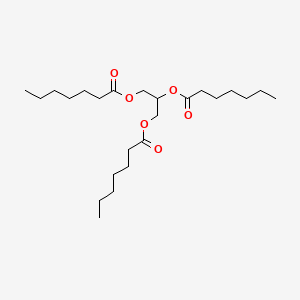 |
0.600 | ||
| ENC003079 | 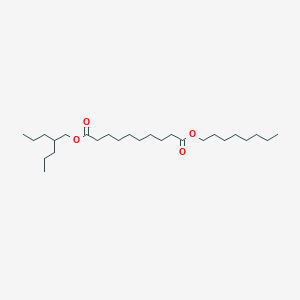 |
0.641 | D0X4FM | 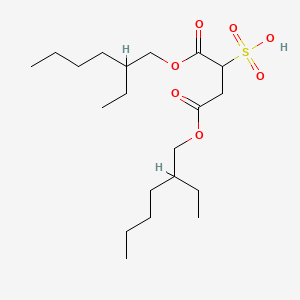 |
0.559 | ||
| ENC000601 | 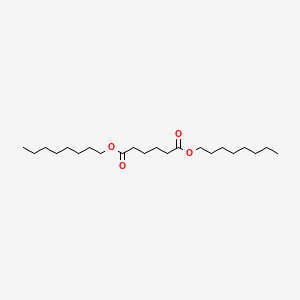 |
0.580 | D0Z1QC | 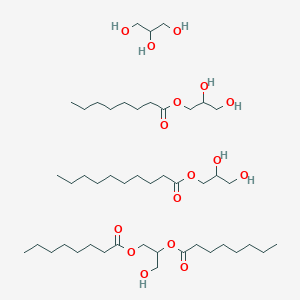 |
0.366 | ||
| ENC003063 | 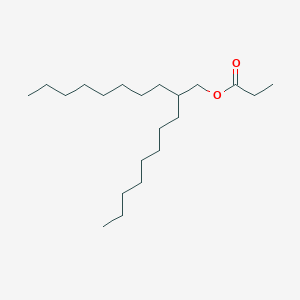 |
0.552 | D0T9TJ | 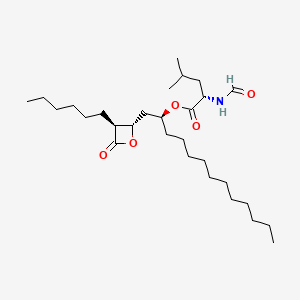 |
0.348 | ||
| ENC000290 | 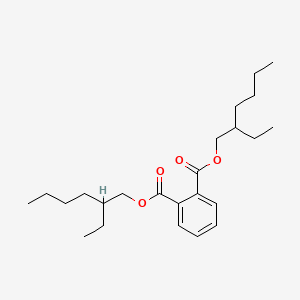 |
0.500 | D07ILQ | 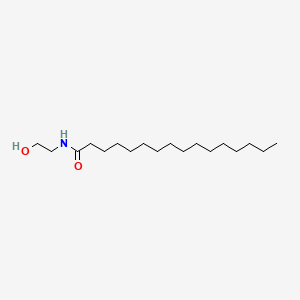 |
0.346 | ||
| ENC000543 |  |
0.494 | D0O1PH | 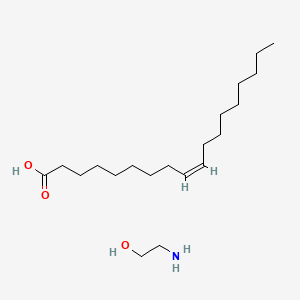 |
0.327 | ||
| ENC001218 |  |
0.471 | D00FGR |  |
0.325 | ||
| ENC001038 |  |
0.467 | D0G2KD |  |
0.304 | ||
| ENC003073 | 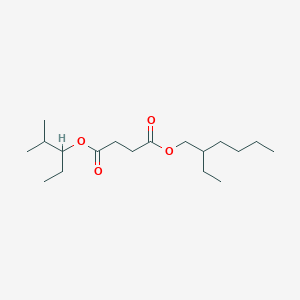 |
0.459 | D0Z5SM |  |
0.302 | ||
| ENC001234 | 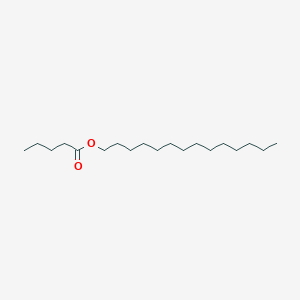 |
0.455 | D05ATI |  |
0.297 | ||